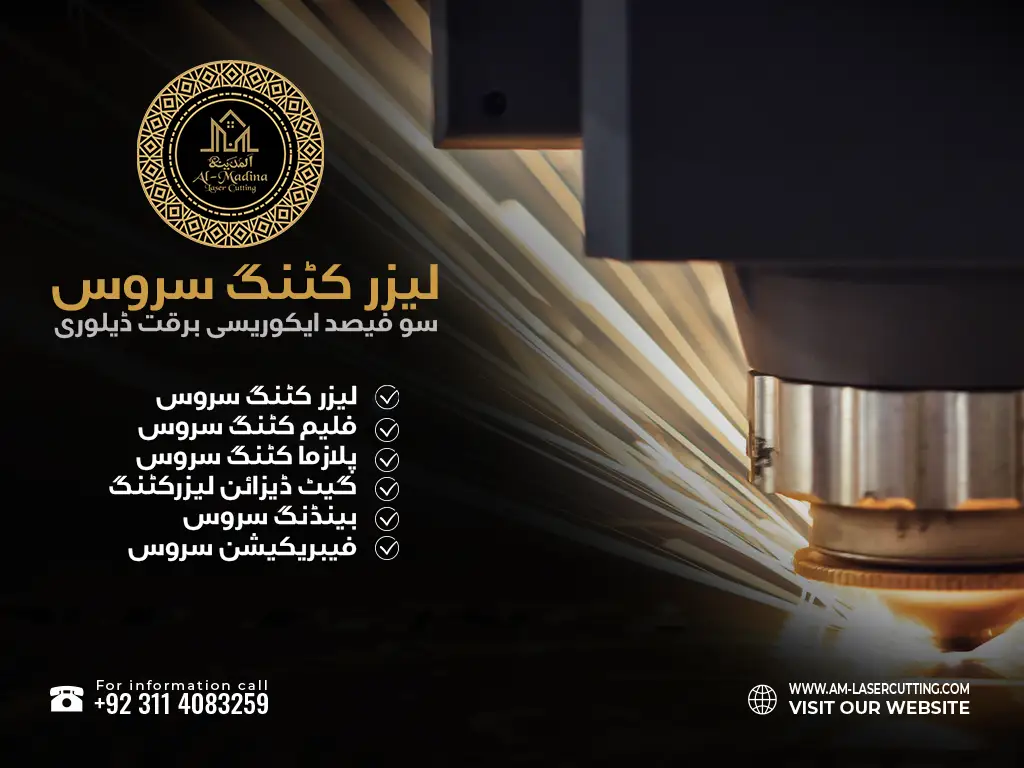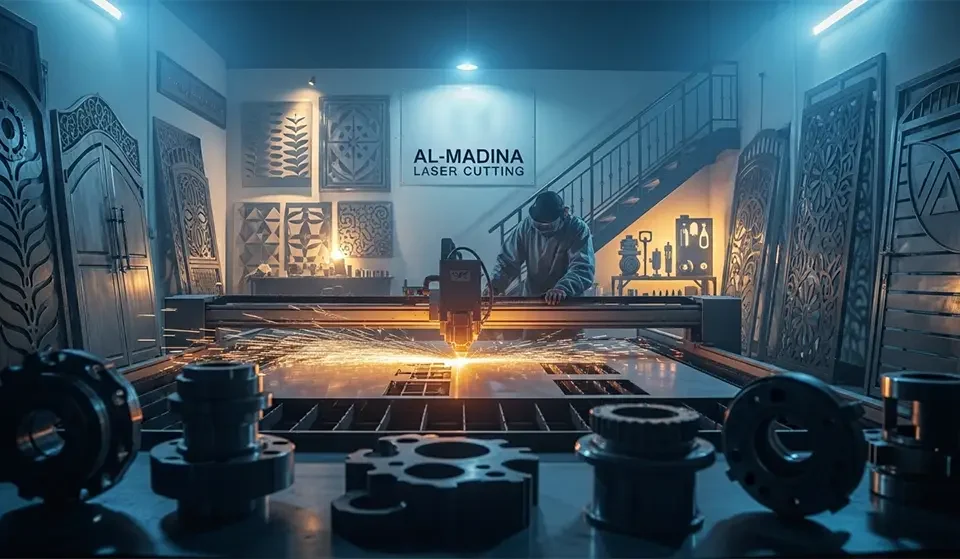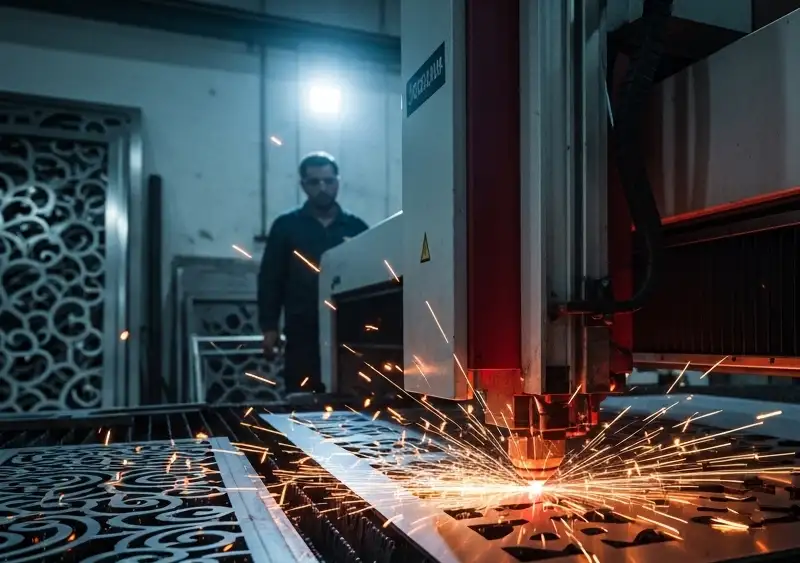
Enhancing Stair Safety and Aesthetics with Laser Cut Stair Railings
June 10, 2024
Al-Madina Laser Cutting: Pioneering Laser Cutting Services in Pakistan
July 31, 2024Introduction
Laser cutting technology has come a long way since its inception, revolutionizing the manufacturing and design industries with its precision and efficiency. Today, laser cutting is not only a staple in industrial manufacturing but also in creative fields such as art, fashion, and architecture. This article delves into the most trending topics in laser cutting, highlighting the innovations and trends that are shaping the future of this versatile technology.
Advancements in Laser Cutting Technology
Laser cutting has continuously evolved, with recent advancements significantly enhancing its capabilities. Modern laser cutters are equipped with higher power lasers and more sophisticated control systems, allowing for greater precision and faster cutting speeds. This has opened up new possibilities for intricate designs and complex geometries that were previously impossible.
Automation and Industry 4.0
One of the most significant trends in laser cutting is the integration of automation and Industry 4.0 technologies. Automation in laser cutting systems reduces manual intervention, increases efficiency, and minimizes errors. Industry 4.0, characterized by the interconnectivity of machines and data exchange, is transforming laser cutting operations into smart manufacturing processes. This allows for real-time monitoring, predictive maintenance, and improved quality control.
Sustainability in Laser Cutting
As industries strive to become more environmentally friendly, laser cutting technology is also advancing towards sustainability. Modern laser cutting systems are designed to minimize energy consumption and material waste. Additionally, the precision of laser cutting reduces the need for secondary processing, further decreasing the environmental impact. The use of recyclable materials and the development of eco-friendly lasers are also contributing to the sustainability of laser cutting.
Expanding Applications of Laser Cutting
The applications of laser cutting are expanding beyond traditional industries. In the medical field, laser cutting is used for creating intricate medical devices and implants with high precision. In the automotive industry, it is employed for cutting complex parts and components. The fashion industry is leveraging laser cutting for creating unique and intricate designs on fabrics and leather. Even in the world of art and architecture, laser cutting is enabling the creation of detailed and innovative designs.
Challenges and Solutions
While laser cutting technology has made significant strides, it still faces challenges such as high initial costs and the need for skilled operators. However, ongoing research and development are addressing these issues. The cost of laser cutting systems is gradually decreasing, making the technology more accessible. Additionally, advancements in user-friendly software and training programs are helping to bridge the skills gap.
Future Trends in Laser Cutting
Looking ahead, several trends are poised to shape the future of laser cutting:
- Hybrid Manufacturing: Combining laser cutting with other manufacturing processes like additive manufacturing (3D printing) to create complex, multifunctional parts.
- Micro-Laser Cutting: The development of ultra-precise lasers capable of cutting at the micro and nano scales, suitable for high-precision industries like electronics and medical devices.
- Laser Cutting in Space: Exploring the use of laser cutting technology for space exploration and construction, enabling the creation of structures in space.
Conclusion
The future of laser cutting is bright, with continuous innovations and trends driving the technology forward. From enhanced precision and automation to sustainable practices and expanding applications, laser cutting is set to revolutionize various industries. As the technology becomes more accessible and advanced, the possibilities for what can be achieved with laser cutting are virtually limitless.
FAQs
- What materials can be cut using laser cutting? Laser cutting can be used on a variety of materials including metals, plastics, wood, glass, and fabrics.
- How does laser cutting compare to traditional cutting methods? Laser cutting offers higher precision, faster speeds, and the ability to cut complex shapes compared to traditional methods.
- Is laser cutting environmentally friendly? Yes, modern laser cutting systems are designed to be energy-efficient and produce minimal waste.
- What industries benefit the most from laser cutting technology? Industries such as automotive, aerospace, medical, fashion, and electronics benefit significantly from laser cutting.
- Can laser cutting be used for large-scale production? Yes, laser cutting is highly efficient for both small and large-scale production.
- What are the limitations of laser cutting? High initial costs and the need for skilled operators are some limitations, but advancements are addressing these issues.
- How precise is laser cutting? Laser cutting offers extremely high precision, capable of cutting intricate designs with minimal errors.
- Can laser cutting be automated? Yes, automation is a significant trend in laser cutting, enhancing efficiency and reducing manual intervention.
- What is micro-laser cutting? Micro-laser cutting involves using ultra-precise lasers to cut materials at micro and nano scales.
- What is hybrid manufacturing in laser cutting? Hybrid manufacturing combines laser cutting with other processes like 3D printing to create complex, multifunctional parts.





